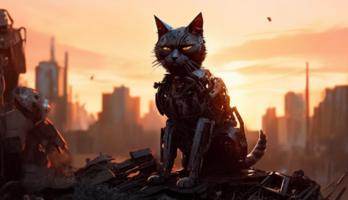Biology - An Illustrated Guide to Science (794127), страница 19
Текст из файла (страница 19)
The segments are both male andfemale, and fertilization is internal. Asthe proglottid ages, it fills withfertilized eggs and is eventually shedfrom the end of the worm. It passesout of the body in the feces (b) andcan get into a secondary host if it eatsthis contaminated feces (c).Life in the secondary hostIn the secondary host (pigs, cows, andfish act as secondary hosts for differenttypes of tapeworm), the tapewormeggs hatch into larvae, which burrowinto the host’s muscles and formcysts (d–e).● If meat from an infected animal is notcooked properly before it is eaten, thecysts can reach the intestine anddevelop into a new tapeworm (f).suckerhooksII Secondary host (pig)dce© Diagram Visual Information Ltd.●110DIVERSITYKey wordscystfecesguthostlife cycleKingdom Animalia:Platyhelminthes:liver flukeLiver fluke life cycleLiver flukes●Liver flukes infect a number of speciesincluding sheep, cattle, and humans.They have a complicated life cycleinvolving two hosts and can damageboth hosts to some extent.
They donot, in fact, live in the liver of theprimary host but in the bile ducts.Flukes in sheepA fluke enters the primary host whenfood containing a liver fluke larva(metacercaria) is eaten (i). Themetacercaria develops in the gu t toform a small worm that burrowsthrough the intestine wall into theabdominal cavity. Here it migrates tothe liver and burrows through it toreach the bile duct (a). It is thisburrowing through the liver thatdamages the host.● The adult flukes live in the bile ductleading from the liver to the gut. Theyproduce eggs here and these pass intothe gut and are expelled in feces (b).a Adult liver fluke insheep bile ductliverliver flukeb Fertilized egg in fecescontaining developingmiracidiumdevelopingmiracidium●capsuleof eggj Metacercaria encysted ongrass, eaten by sheepac Egg hatches in waterreleasing miracidiumcapsuleof eggbii MetacercariahcdgeDisaccharidesThe eggs hatch in water (c) to form aciliated miracidium.
This larval formcan infect the secondary host, aspecies of water snail (d).● Inside the snail, the miracidiumbecomes a sporocyst, which changesinto a redia (e). The redia thenproduces a very small tadpole shapedcercaria, which leaves the snail andgoes onto grass (f–h). There it forms ashell (is encysted) (i) and waits to beeaten (j). The stomach acids in theanimal eating the contaminated fooddissolve the cyst, and the liver flukemoves to the bile ducts and restartsthe cycle.jf© Diagram Visual Information Ltd.●d Ciliated miracidiumburrows into snail hosth Free cercariag Cercaria escapingfrom snaile Sporocyst withdeveloping rediaf Redia withdeveloping cercariarediacercariaredia111Kingdom Animalia:NematodaDIVERSITYKey wordsbuccal cavityguthermaphroditeTypical nematodeAscarislumbricoidesAnterior endof wormAscarislumbricoidesExternal viewDorsal viewExternal viewanterior endanteriorendDistribution●dorsal Iipbuccalcavitydorsal IineNematodes are the most numerousmulticellular organisms on Earth, withover 20,000 different species known.
Ahandful of soil will typically containmany thousands of the worms.Nematode structureNematode bodies typically have 1,000cells, with a large proportion of thesein the reproductive system.● A gu t reaches from the mouth at theanterior end to the anus at theposterior end. The mouth often hasadaptations to aid the nematode in itsdiet. Some species have a sharptubular structure that can penetratecells and suck out the contents.Nematodes that feed on living preyhave teeth-like structures.
Nematodesthat feed on bacteria can suck fluidsinto the bu ccal cavity, a triangular orcylindrical tube where digestionbegins.●Anterior end of wormVentral viewventral lipsgenitalapertureventral lineexcretoryporeReproductionNematodes reproduce sexually andhave male and female forms as well asherm aphrodite ones. Where thespecies is hermaphrodite, the worm ismale first and then develops femaleorgans.● Male nematodes have copularyspicules used to hold the femaleduring reproduction. The malenematode usually has a single testisthat produces ameboid spermatozoa,which are released into the femalevulva to give internal fertilization. Thefemale form is usually larger than themale and has one or two ovaries.
Eggsare laid that hatch to form new worms.Anterior viewdorsal Iinedorsal Iiplateral lineventral lipsventral lineposterior endposteriorendPosterior end ofPosterior end ofLateral viewLateral viewvulvacopulatory spicules© Diagram Visual Information Ltd.●Lips112DIVERSITYKey wordsalveolusfecesintestinelarvaKingdom Animalia:Nematoda: life cycleRoundworm life cycleAscaris Iumbricoides adults in human intestineAscaris lumbricoides●Ascaris lu m bricoides or roundwormsinfect humans and pigs.
The speciescan pass between humans and pigs ina manner similar to that of tapewormsbut with the added complication thatin humans the worm also passesthrough the lungs.human gutlarvaReproduction and life cycleAdult females in the in testin e produceeggs that pass out in the feces.A typical female can produce up toHaving passed through200,000 eggs every day.the liver and lungs, a● The eggs can be ingested withlarva is coughed upcontaminated food or water and formand swallowed.the first stage larvae.
These burrowthrough the intestinal wall into thebloodstream and pass throughthe liver to the lungs. Inthe blood vessels of thelungs, they developinto the next stage andmove into the alveoli.An egg is eaten● The larvae in the lungsby a human; thelarva hatches inare coughed up andthe intestine.pass down into thestomach and then tothe small intestine. ItThe larva passesthrough the gutis in the smallwall into theintestine that theybloodstream.complete development tobecome sexually matureadults.© Diagram Visual Information Ltd.●An infective larva develops within an egg.eggcapsuleAscaris Iumbricoidesadults live in thehuman intestine.humanlungshuman liverThe egg passes out in the feces.113Kingdom Animalia:AnnelidaDIVERSITYKey wordshermaphroditesegmentEarthwormLateral viewsegmentsEarthworms●The 2,700 earthworm species aremembers of the annelida.Body structure●oviduct openingspermathecalopeningsvas deferens openingmouthseminal grooveprostomiumdorsal surfaceventral surfaceEarthworms have a segmentedbody, with each segm en t bearingthe same fundamental structures.● Visible external structuresinclude the setae, tiny bristlesthat allow the worm to gripsurfaces to help withmovement.● Earthworms have no eyes,but they do have lightsensitive cells on theirouter skin that help themdetect light levels.● Earthworms eat by pullingfood into their mouth usingtheir prostomium.ReproductionEarthworms are herm aphroditebut cannot fertilize their owneggs.
Sperm travels from theopening of the vas deferensalong the seminal groove to theclitellum.● When two earthworms copulate,they lie side by side and head to tailso that the clitellum segments in eachare opposite the segments containingthe sexual organs of the other. Eachexchange sperm, which is stored ininternal sacs called spermathecae.The clitellum then secretes a slimetube, the cocoon, around eachanimal.● The earthworm then wiggles out ofthe tube headfirst. While the tubepasses from the clitellum to theprostomium, it passes over theoviduct, which deposits eggs into thecocoon, and then the spermathecalopening, which release the storedsperm.● Once the worm is out of the cocoon,it seals to form an incubator.clitellumsetaeanus© Diagram Visual Information Ltd.●114DIVERSITYKey wordsgillguthermaphroditeKingdom Animalia:MolluscaClamExternal view of left sidegrowth linesumbowaterInside right valveposterior retractorposterior adductorposteriorThere are over 150,000 species ofmollusks, and all have a muscular footfor locomotion and a mantle thatcovers the top of the animal.
Manymollusks also have a hard shell madeof calcium carbonate. The spacebetween the mantle and this shelloften houses gills, which can extractoxygen from water.mud●inhalant siphonhingeMollusksexhalant siphonClam body structureClams are a good example of molluskswith two hard shells, called valves, thatprotect the soft body. The largestclams are the giant clams, which canreach sizes of four feet (1.22 m)across.
Most clams are only a fewinches long.● Strong muscles, called the adductormuscles, open and close the clam.When it is open, the foot protrudesfrom between the valves and allowsthe clam to partially bury itself in thesand on the seabed or riverbed.● Clams are filter feeders and take inwater through two holes calledsiphons. Food particles can then beextracted and digested in the clam’sgu t. The gut is complete, running frommouth to anus. Flow is one-way.● Clams reproduce sexually and are notherm aphrodite.● Clams have a developed circulatorysystem to pass oxygen and foodaround their bodies.foot●anteriorpallial lineanterior adductoranterior protractoranterior retractorInternal structure (left side removed)genital openingliveranterior aortastomachpericardiumventricleanterioradductorreno-pericardial openingauriclemouthposterior aortarectumexhalant siphoninhalant siphon© Diagram Visual Information Ltd.visceralganglionsuprabranchialchambermantlefootpalpspedal ganglionright gillintestinegonadkidneyshell115Kingdom Animalia:Mollusca: GastropodaDIVERSITYKey wordsgaseousexchangegillhermaphroditetentacleSnailLateral viewrespiratory poreanusshellsubstrateSnail body structurereproductive openingSnails belong to the class Gastropoda,which is the largest group in theMollusca, with up to 75,000 species.● Snails have a single coiled shell with aspace between the inside of the shelland the mantle that allows for gaseou sexchan ge.
Snails do not have gills, sothe mantle acts as a simple lung.● Snails have developed eyes andten tacles and are much more activethan some of the other mollusks.Their head is well-developed and has abrain capable of handling a significantlevel of sensory input.● Snails have an organ called a radula.This is an area of the body that istoughened and equipped withteethlike projections made of a tough,fibrous material called chitin. Snailsuse their radula to dislodge food fromsu bstrates. The radula can break upfood, making it easier for the snail toswallow and digest it.● Snails reproduce sexually, lay eggs, andare not herm aphrodite.●eyetentaclesfootvas deferensovotestisseminal receptacledigestive gland(liver)albumen glandshellintestineInternal structurelungmucous glandgonoporeeyemouthradulagangliaexcretory porecropanussalivary glandsfootheartkidneystomachoviduct© Diagram Visual Information Ltd.ganglia116DIVERSITYKey wordsabdomenexoskeletonspiraclethoraxKingdom Animalia:InsectaGrasshopperLateral viewabdomenthoraxheadThe insects●In terms of numbers, the insects arethe most successful group on theplanet.
















